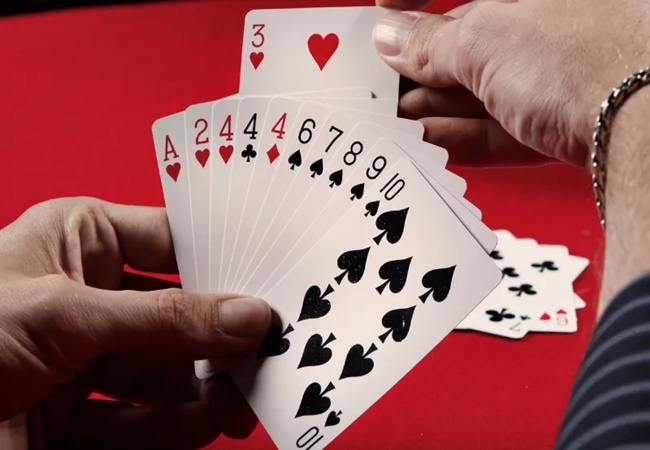Rummy Games and Their Global Appeal: A Cultural Perspective
Best Rummy is a card game that has captivated millions of players across the globe, transcending cultural and geographical boundaries. Its appeal lies in its blend of skill, strategy, and chance, making the Rummy game both accessible to novices and deeply engaging for seasoned players. This essay explores the cultural significance of rummy, its historical evolution, and the factors contributing to its widespread popularity.

Historical Roots of Best Rummy
The origins of best rummy are somewhat murky, with various theories suggesting different points of inception. Some historians trace the game’s roots to Spain, where a similar game called “Conquian” was played as early as the 16th century. Others believe that rummy evolved from Chinese tile games like Mahjong, which were introduced to the West in the 18th and 19th centuries. Regardless of its precise origins, rummy quickly spread to various parts of the world, adapting to local customs and preferences, including the popular game Teen Patti Stars.
Rummy’s Global Variants
One of the reasons for rummy’s global appeal is its adaptability. The game has numerous variants, each with its own unique rules and strategies. In India, for example, the 13-card rummy is extremely popular, often played during festivals and social gatherings. This variant emphasizes melding sequences and sets, reflecting the Indian cultural emphasis on order and harmony.
In Latin America, best rummy is often played in the form of “Conquian” or “Coon Can,” which has simpler rules and a faster pace. The game is a staple in family gatherings and community events, underscoring the region’s vibrant social culture. Similarly, in North America, the “Gin Rummy” variant is a favorite, especially during the early to mid-20th century. Gin Rummy’s popularity in the United States was partly due to its frequent depiction in Hollywood films and its appeal among celebrities, which helped cement its status as a sophisticated yet accessible pastime.
Cultural Significance of Rummy
Best Rummy is more than just a card game; it is a cultural artifact that reflects the values and social structures of the societies where it is played. In many cultures, best rummy is associated with family and social bonding. The game’s inherent need for interaction and engagement makes it a perfect activity for bringing people together. For instance, in India, best rummy is often played during the festival of Diwali, where families gather to celebrate and share in the festive spirit. The game becomes a means of reinforcing family ties and celebrating cultural heritage.
In the Western world, best rummy has often been a game of choice in casual social settings, such as parties and informal gatherings. The game’s easy-to-learn rules and engaging nature make it a perfect icebreaker, fostering camaraderie and friendly competition. The cultural significance of rummy in these contexts lies in its ability to create a shared experience, bridging gaps between different generations and social groups.
The Skill and Strategy of Rummy
One of the key factors contributing to rummy’s enduring appeal is the balance it strikes between luck and skill. While the initial dealing of cards is a matter of chance, the game itself requires strategic thinking, memory, and the ability to read opponents. This blend of luck and skill makes rummy an intellectually stimulating game that challenges players to improve their abilities over time.
In many cultures, the strategic aspect of rummy is highly valued. In Japan, for instance, the game “Hanafuda,” which shares some similarities with rummy, is regarded as a test of mental acuity and strategic planning. The game’s cultural significance is tied to the value placed on intelligence and strategic thinking in Japanese society.

Rummy in the Digital Age
The advent of the digital age has further propelled rummy’s global appeal. Online rummy platforms have made the game accessible to a broader audience, breaking down geographical barriers and enabling players to compete with others from around the world. These platforms often include tutorials and practice modes, making it easier for newcomers to learn the game and for seasoned players to refine their strategies.
In countries like India, the rise of online rummy has been particularly notable. The game’s popularity has surged, with millions of players logging in daily to compete in tournaments and casual games. The cultural impact of this digital shift is significant, as it reflects broader trends in the digitalization of traditional pastimes and the increasing importance of online communities in contemporary social life.
Conclusion
Rummy’s global appeal is a testament to its versatility and cultural significance. The game has evolved and adapted to different cultural contexts, becoming an integral part of social and familial traditions worldwide. Its blend of luck and skill, coupled with the strategic depth and social interaction it offers, makes best rummy a timeless classic that continues to captivate players of all ages and backgrounds.
As we move further into the digital age, best rummy’s appeal is likely to grow even stronger, drawing in new generations of players and fostering connections across cultural and geographical boundaries. The game’s enduring popularity is a reflection of its ability to adapt and thrive in a changing world, making it a true cultural phenomenon with a global reach.







